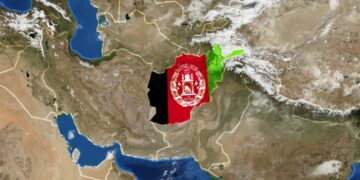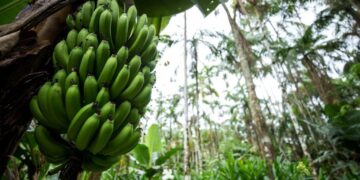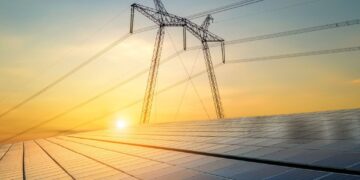Adenike A. Akinsemolu 1,2 Bridget N. Akintewe;1 Foluke V. Arijeniwa 2 Victor L. Olatunbosun 2
1Adeyemi Federal University of Education, Ondo, Nigeria (Formerly Adeyemi College of Education)
2The Green Institute, Ondo, Ondo State, Nigeria 351101
*Corresponding Author Email: a.akinsemolu@bham.ac.uk …
Abstract
Planet Earth is amid a climate crisis occasioned by human activities that release greenhouse gases into the atmosphere and natural processes that affect the planet’s warming and cooling patterns. As a result, sea levels are rising, coral reefs are dying, and the pH of the world’s oceans is decreasing; the planet is becoming progressively hotter, forest cover is reducing, and weather patterns are becoming increasingly erratic. These effects are experienced universally, but traditionally, vulnerable groups of the population are affected more severely. For instance, climate change exacerbates the vulnerabilities experienced by women from coastal communities. Mindful of the understanding that coastal women’s experiences and vulnerability to climate change vary across communities, we sought to investigate the effects of climate change on coastal women using the women of Aiyetoro in Southwest Nigeria. Men and women from Aiyetoro (N=150) were interviewed to gather information on the effects of climate change on women in the community. Their responses were analyzed, showing that the women are aware of and have experienced extensive effects of climate change, including rising sea levels and temperatures, coastal erosion, ocean acidification, extreme weather events, deteriorating health and well-being, and death. This study adds to the existing pool of knowledge by highlighting how coastal women experience climate change and identifying avenues to engage them, teach them, and learn from them about their potential role in addressing the climate change crisis.
Keywords: Climate change, gender, coastal community, climate-resilient activities, coping strategies.
1. Introduction
Climate change is a rapidly evolving global phenomenon that has far-reaching impacts on ecosystems and societies. One of the environments most affected by climate change is the coastal zone, which is highly vulnerable to the impacts of rising sea levels, ocean acidification, and coastal erosion (Hoegh-Guldberg et al., 2017). These impacts can cause widespread damage to coastal communities, infrastructure, and ecosystems and have far-reaching social, economic, and environmental consequences (Berman et al., 2020; Hastings et al., 2020). While the impacts of climate change on coastal communities are well documented (Rao et al., 2019; Hans et al., 2021; Vercillo et al., 2022), the effects on women in these communities have received less attention (Desai & Zhang, 2021; de la Torre-Castro et al., 2022; Vercillo et al., 2022). Women in these communities are particularly vulnerable to the effects of climate change due to their unique social, economic, and political positions, which manifest through widespread gender inequality, a high incidence of gender-based violence, limited access to relevant information, and behavioral restrictions that limit their social and economic participation (de la Torre-Castro et al., 2022; Kantamaneni et al., 2022).
Coastal women’s vulnerability to climate change is pegged on their reliance on natural resources to care for their families and communities. The consequences of climate change have influenced many of their everyday activities, including access to clean and safe water, food, and fuel for food preparation, lighting, and other domestic responsibilities. The women’s limited access to these resources is exacerbated by various factors, including their limited mobility and children’s inability to swim, which leads to more women and children perishing during disasters compared to their male counterparts. Additionally, rising sea levels and coastal flooding threaten housing affordability and security in coastal areas (Buchanan et al., 2020). The lack of secure housing increases harassment, preventing women from seeking space in shelters during disasters caused by climate change (Zahan, 2022; Hasan & Shovon, 2019). Women’s health is still quite vulnerable during disasters. Numerous studies have shown a relationship between climate and weather and the evolution and spread of infectious illnesses. This increases the prevalence of infectious diseases, including cholera, malaria, and dengue fever, since the risk seasons are extended and disease vectors are distributed more widely geographically (Khan et al., 2003). Further, women and young girls frequently experience urinary tract infections due to a lack of lavatories in addition to violence inside and outside of their households from male family members and strangers (Alam et al., 2008; Zahan, 2022).
However, it is crucial to remember that while women in coastal communities are particularly susceptible to the effects of climate change, they have been shown to play critical roles in community mitigation, adaptation, and resilience (Shahin et al., 2022). Women in these communities often have deep connections to their local environment and a wealth of knowledge about their local ecosystem that may be used for methods for reducing catastrophe risk, adapting to climate change, and all of these things in between. They are often leaders in the development of innovative solutions to the impacts of climate change, such as the creation of new livelihood opportunities and the development of new ways of living that are more resilient to the impacts of climate change (Adeleke et al., 2020; de la Torre-Castro et al., 2022). Climate change projections show that women’s vulnerability will become more pronounced regarding limited access to natural resources (particularly land and water), finance and markets, knowledge and information, and other factors (Chayal et al., 2013; McMahon & Johra, 2012).
Several studies have been conducted in different regions around the world, including in Southeast Asia and Africa, to examine the impacts of climate change on women in coastal communities. For example, studies by Md et al. (2022), Zahan (2022), and Shahin et al. (2022) found that women in coastal communities in Bangladesh are particularly vulnerable to the impacts of sea level rise, as they are often responsible for collecting water and cultivating crops that are vulnerable to flooding. Similarly, a study by Allen et al. (2021) in Kenya found that women in coastal communities are more vulnerable to climate change due to their dependence on natural resources for their livelihoods and limited access to education and resources to cope with these changes.
The investigation of de la Torre-Castro et al. (2022) into the fundamental elements enhancing coastal women’s potential for adaptation in Zanzibar (Unguja Island), Tanzania, utilising Cinner et al. (2018) five domains typology for adaptive capacity—assets, flexibility, organisations, learning, and agency showed that demonstrate that women’s poor levels of adaptability, their persistent poverty, and their substantial reliance on the red algal seaweed industry—a source of meagre income that is already having a significant negative impact on their well-being—are all factors in the world’s changing climate. In his essay, Onwutuebe (2019) demonstrated how patriarchy contributes to a high rate of exposure of women to the harmful effects of climate change using Nigeria as a case study. Through the preservation of specific advantages for men, patriarchy promotes gender disparity against women. This disparity serves as the foundation for men and women using their authority differently, and it is a significant contributor to the disproportionate impact of climate change on them. Threats to gender security in society are exacerbated by climate change. It serves as a threat multiplier, catalysing and escalating the issue of women’s marginalisation. The dependence on men for survival worsens when climate change affects agricultural activity and jeopardises the livelihood of women engaged in farming (Laczko & Aghazarm, 2009; Onwutuebe, 2019).
Another aspect of evaluating and broadening the scope of land snatching is the patterns and dynamics of land deprivation in which Nigerian women either need to be adequately recognised or wholly excluded. Women suffer far greater risk in places where they cannot participate in other economic or public activities like men do in the face of the mounting challenges posed by climate change (Cotula, 2013; Onwutuebe, 2019). This means that after a man passes away, his possessions, mainly landed property, are taken or divided among the family’s relatives. It is sometimes said that all considerable property, including the land, belongs to the husbands, and the woman herself is practically regarded as a type of “property” (Aluko, 2015). Women are more susceptible to climate change when they lack land access (Nigerian Environmental Study Team, 2011). Therefore, many have trim or no other employment options save small-scale farming. Nigeria’s lack of access to land continues to undermine efforts to empower women.
From the above case studies, rising sea levels emerge as one of the most visible impacts of climate change and have devastating effects on coastal communities worldwide (Adegun, 2023; Kubiszewski et al., 2020). Women in these communities are often the first to feel the impacts of rising sea levels, as they are often responsible for caring for their families, including their homes and livelihoods. Women have often been forced to abandon their homes and communities due to rising sea levels, leading to increased poverty, displacement, and loss of traditional knowledge and cultural heritage (Onwutuebe, 2019). Ocean acidification is another climate change impact severely affecting coastal communities, including women. The acidification of oceans is having a profound impact on the marine food chain, leading to decreased availability of fish, shellfish, and other essential food sources for coastal communities (Hoegh-Guldberg et al., 2017). Women in these communities are often the primary food providers for their families and are the first to suffer from the impacts of declining food security (de la Torre-Castro et al., 2022). Third, coastal erosion is another impact of climate change that is devastatingly affecting coastal communities, including women. The loss of land and homes to coastal erosion has severe social, economic, and political impacts on coastal communities, including increased poverty, displacement, and loss of traditional knowledge and cultural heritage (Kalacska et al., 2017). Women in these communities are often the first to feel the impacts of coastal erosion, as they are often the primary caretakers of their families and homes (de la Torre-Castro et al., 2022).
Coastal communities, especially in developing countries, are highly vulnerable to the impacts of climate change. These communities often depend heavily on the ocean and its resources for their livelihood. They are thus at increased risk from rising sea levels, increased frequency and severity of storms, and other climate-related impacts (Glavovic et al., 2022). One such community is Aiyetoro, located in the Ilaje Local Government Area of Ondo State, Nigeria. Aiyetoro was once known as the “Happy City” because of its inhabitants’ unique and communal lifestyle. However, today, the community has lost its happiness due to the devastating effects of climate change (Akinsemolu & Olukoya, 2020). The rise in sea level, resulting from global warming and oil exploration, has led to severe flooding that has washed away homes, the cemetery, and the iconic worship centre of the town (Adeleke & Balogun, 2013). Despite a multi-billion-naira shore protection project awarded by the NDDC (The Niger Delta Development Commission) sixteen years ago, with billions of naira already paid to the contractors, nothing has been done to stop the ocean surge rapidly erasing the community (Akinsemolu & Olukoya, 2020; Adeleke & Matthias, 2016). Women are the most vulnerable to the impacts of climate change, particularly in coastal communities such as Aiyetoro. Coastal areas are often home to lower-income communities, and women in these communities are often responsible for securing food, water, and shelter for their families (Thomas et al., 2019; Andrijevic et al., 2020). Climate change exacerbates these already challenging circumstances, putting even greater pressure on women to find resources and cope with the effects of rising sea levels, more frequent and intense storms, and increasing temperatures (Lauria et al., 2018; Nyangoko et al., 2022).
This study aims to assess these impacts of climate change on coastal women in the Aiyetoro community. The study will focus on how the changing climate affects the livelihoods, health, and well-being of women in Aiyetoro by assessing the impacts of climate change on the population of the study, examining the relationship between the identified effects and the women’s livelihoods, investigating coping mechanisms, identifying challenges faced by the women in adapting to the impact of climate change, and inferring recommendations on how to enhance the resilience of coastal women in Aiyetoro in the face of climate change.

Figure 1: Map showing the location of Aiyetoro (S7), Ilaje district in Ondo State, Nigeria Akinsemolu & Olukoya, (2020).

Figure 2: Women on a search for fish, firewood and other materials in Aiyetoro (Author fieldwork, 2017).

Figure 3: Image showing women selling domestic items on the sea (Author fieldwork, 2017).

Figure 4: Image showing the interview session between the researcher and a respondent (Author fieldwork, 2023).

Figure 5: Image showing a focus group discussion during the fieldwork to Aiyetoro (Author, fieldwork, 2023)
2. Materials and Methods
A mixed-methods approach incorporating qualitative and quantitative data collection techniques was used to comprehensively understand climate change’s impact on coastal women in Aiyetoro. Aiyetoro is a coastal town in Ilaje District, Ondo State, Nigeria. Once nicknamed “Happy City” due to the unique and communal lifestyle adopted by its inhabitants, the town has gradually lost its once characteristic happiness due to the devastating effects of climate change (Akinsemolu & Olukoya, 2020). As of 2015, Aiyetoro had an estimated population of 65,863, with 32,200 (48.9%) being male and 33,663 (51.1%) being women (City-Facts, 2015). In the eight years since, the population of the coastal city has dropped to just 5,000 inhabitants, with locals attributing the rapid decline to the submersion of parts of the city due to rising sea levels (Jamiu, 2023).
Two primary data collection methods were used to conduct a community assessment in Aiyetoro. First, a series of focus group discussions were organised to allow the women to discuss their experiences, challenges, and coping strategies in response to the impacts of climate change. Second, key informant interviews were conducted among relevant stakeholders, including government agencies, NGOs, and community leaders, to gain insight into the current policies and interventions for climate change in the area as well as the challenges faced by women in the community in adapting to the impacts of climate change. All findings were populated in a questionnaire, which captured the demographic characteristics of the respondents together with other information relevant to the study. The collected data was analyzed using SPSS into themes and subthemes, including the demographic characteristics of the respondents, the effects of climate change experienced by women in Aiyetoro, their impacts on the women’s livelihoods and the coping strategies they have adopted, and the effects of climate change on their health and general well-being. The following results were derived from the collected data.
3. Results
The gender and age of the respondents (N=150) varied, with female respondents making up the majority of the respondents. Additionally, respondents aged under 18 made up the smallest percentage, while those aged 35-40 made up the most significant proportion of all age groups, as shown in Figures 1 and 2 below. Additional demographic information, including the education level, religion, marital status, and occupation, was collected and presented in Figures 3, 4, 5, and 6 below as a testament to the diversity of the insight derived from the respondents on the topic of study.

Figure 1: The Age Distribution of the Respondents

Figure 2: The Gender Distribution of the Respondents

Figure 3: The Education Level of the Respondents

Figure 4: The Religion of the Respondents

Figure 5: The Marital Status of the Respondents

Figure 6: The Occupation of the Respondents
An initial assessment of the respondents’ understanding of climate change uncovered different levels of their understanding of the concept, with 39 respondents having a good grasp of it. At the same time, three (3) did not understand climate change. Notably, most respondents reported having a limited understanding of the concept, with nearly half stating that they needed help understanding it, as shown in Figure 7 below.

Figure 7: The Respondents’ Level of Understanding of the Concept of Climate Change
The church in Aiyetoro emerged as the residents’ primary source of knowledge on climate change, with the media, through Television, Radio, and newspapers, following closely behind, while schools and NGOs trail as the institutions through which the respondents first learned of the concept of climate change as shown in Figure 8 below. In a follow-up question, only 15 respondents had received formal training or education on climate change, with the rest learning about climate change informally.

Figure 8: Sources of Knowledge on Climate Change
It was interesting to note that while the community does not fully understand the concept of climate change, the effects of the concept have been observed and experienced universally by all the respondents. Specifically, 130 of the 150 respondents reported that despite not comprehending the concept entirely, they were aware of climate change and its potential impacts on their community. Similarly, all respondents had witnessed and experienced these effects personally, as demonstrated in Figures 9 and 10 below.

Figure 9: Respondents’ Awareness of Climate Change and its Potential Impacts on their Community

Figure 10: Respondents’ Witness to or Personal Experience of Climate Change-Related Events in Aiyetoro
While all respondents had witnessed or experienced the effects of climate change, some specific effects were experienced universally, while others were rarely experienced. All respondents reported observing the water levels in the Atlantic Ocean rising and eroding their coastal land and experiencing extreme weather events such as storms and hurricanes. One hundred twenty-six (126) respondents reported experiencing rising temperatures, while 129 reported experiencing or observing ocean acidification. However, only three respondents reported having witnessed deaths related to climate change, as shown in Figure 11 below. Rising sea levels were the most visible of all the identified effects of climate change, as shown in Figure 12 below. However, temperature changes are equally palpable since, when further asked to share their perception of the area, 145 respondents stated that temperatures had risen while five noted drops, as shown in Figure 13 below.

Figure 11: Climate-Change-Related Events Experienced by the Residents of Aiyetoro

Figure 12: The Visibility of the Effects of Climate Change in the Community

Figure 13: Perception of Temperature in the Community
Climate change has affected the livelihoods of the inhabitants of Aiyetoro, prompting them to adopt various coping strategies. 147 of the 150 respondents have all had to change their livelihood activities, with three not changing their lifestyle to cope with climate change. Similarly, most workers rated climate change’s overall impact on their livelihood as severe. The most common ways that the livelihoods of the respondents have been affected include reduced fishing yields, increased health risks, displacement or the loss of housing, and rising cost of living, with a few respondents reporting less common effects such as the loss of agricultural productivity and the disruption of their everyday lives as shown in Figure 14 below.

Figure 14: Effects of Climate Change on Livelihoods and Daily Life
While these effects are universal, some are unique to women. These include increased caregiving responsibilities, limited access to climate information, gender-based disparities in decision-making, insufficient resources for climate-resilient activities, and others, as listed in Figure 15 below.

Figure 15: Challenges Faced by Coastal Women in Adapting to Climate Change
The women in Aiyetoro have adopted various measures to counter the above challenges. These include diversifying their sources of income, relocating to less vulnerable areas, community-based adaptation initiatives, and early warning systems and disaster preparedness. However, none of the respondents reported receiving government help to cope with the effects of climate change, as shown in Figure 16 below. Besides, none of the coping strategies are gender-specific. Nevertheless, the identified strategies have been highly effective in addressing the effects of climate change, according to 120 of the 150 respondents, despite the lack of support by the Nigerian government or NGOs, as demonstrated in Figure 17.

Figure 16: Coping Strategies Adopted in Aiyetoro

Figure 17: Government and NGO Support in the Implementation of Coping Strategies
Finally, while the strategies are effective in addressing the impacts of climate change, the women in Aiyetoro report experiencing extreme stress and anxiety. Some of the coping mechanisms they have adopted in response to distress from the effects of climate change include talking to friends and family, engaging in climate change and activism, participating in community resilience programs, seeking professional help or counseling, religion, and practicing mindfulness or meditation as shown in Figure 18 below. These mechanisms have proven effective for most respondents, as demonstrated in Figure 19 below.

Figure 18: Coping Mechanisms Used to Deal with Stress and Anxiety Related to Coastal Climate Change
Figure 19: The Effectiveness of Coping Mechanisms Used to Manage Stress and Anxiety

4. Discussion
The current study confirmed the disproportional burden women in coastal communities bear in experiencing and dealing with the effects of climate change. Some unique impacts of climate change on women’s lives in Aiyetoro include increased caregiving responsibilities, which stem from deeply entrenched gender roles in Nigeria that leave caregiving solely in the hands of women (Allotey et al., 2022). While women in Aiyetoro are burdened with the role of taking care of their families and community, their input in decision-making is limited, as evident in the reported gender-based disparities in their involvement in efforts to address the effects of climate change. Their limited input in such crucial decisions, in turn, yields community interventions that do not consider women’s needs. This is reflected in both formal and informal policies in response to climate change, which relies on gendered assumptions and has prompted calls for gender mainstreaming in issues related to climate change and environmental sustainability (Rainard et al., 2023).
Consequently, women are further disenfranchised, particularly since their access to resources and information is also limited, as are the opportunities available to organize, lead, and participate in climate action initiatives. Women in Nigeria, for instance, are the most disempowered and food-insecure population group in the country, with a level empowerment rate of 11.78% compared to an average national rate of 21.63% (Ashagidigbi et al., 2022). The dwindling water resources and reduced output from integral economic activities such as fishing, agriculture, and tourism compound the disempowerment of the women in Aiyetoro, not only threatening their ability to survive and take care of their families but also impairing their health and well-being while reducing their ability to take advantage of coping mechanisms such as diversifying income resources, which required a level of adaptability that the women lack or seeking professional help of counseling, which requires financial input. Instead, the women have resorted to coping mechanisms that do not require financial input, including talking to friends and family and seeking refuge in religion. Further, women are gradually rising to participate and contribute to community programs seeking to address the effects of climate change, as evidenced by their participation in climate change activism and community resilience programs. However, the barriers to their participation must be addressed for these strategies to be effective. Current barriers identified in the study include limited education and access to information on climate change and its effects, limited assistance from the government or NGOs in the development and implementation of strategies to deal or cope with the effects of climate change, a disproportional burden of caregiving, and insufficient resources for climate-resilient activities. Addressing these challenges will ultimately enhance the women’s understanding of climate change, ability to cope with its effects, and contribution to efforts to mitigate the effects of climate change and enhance Aiyetoro’s resilience against them.
5. Conclusion
Women in Aiyetoro are vulnerable to the impacts of climate change, which have affected their sources of income, such as fishing, tourism, and agriculture, compounding their limited access to information, resources, and opportunities for education on climate change and the actions they can take to mitigate or cope with its effects. The findings of this study provide essential insights into the challenges faced by women from coastal communities in Southwest Nigeria and inform the development of strategies to help these communities adapt to the changing climate. By examining the experiences of coastal women in Aiyetoro, we identified the specific challenges women face in coastal communities, which include stress and anxiety, physical health impairments, an increased burden in their role as caregivers, and dwindling resources that limit the women’s sources of income. Limited education opportunities, information, and support from the government and NGOs emerge as key impediments to women’s participation in mitigating climate change and enhancing their community’s resilience against climate change. The impediments present an opportunity to inform strategies to address most of the challenges facing women in Aiyetoro through education, access to information, and general empowerment to increase their participation and contribution to addressing climate change and its effects on their community and land.
Recommendations
The study’s findings provide essential insight into the challenges faced by women from coastal communities, contributing the following recommendations to address these challenges and build more resilient communities in the wake of climate change. First, the lack of information and limited education on climate change and its effects are the leading inhabitants of women’s participation and involvement in the restoration of their community and influence their ability to cope with the effects of climate change. Community education and awareness programs will bridge the gap in women’s education and harness their economic and social participation in restoring their community’s resilience against climate change while allowing them to adopt effective coping mechanisms such as participation in community resilience programs, diversifying income sources, and disaster preparedness. This involves practical steps such as providing access to up-to-date scientific data and research and using the institutions through which the community derives information, such as religious institutions and schools. Second, one of the problems cited universally by the respondents is the lack of government support in addressing climate change in the community. The provision of funding for climate change adaptation projects by the government or NGOs is a viable actionable plan that will equip the women in Aiyetoro with the resources they need to participate in awareness programs, run adaptation projects, and improve the community’s infrastructure to enhance its resilience against extreme weather conditions and other effects of climate change. The government can boost the community’s ability to address the effects of climate change further by establishing policies and enforcing regulations that secure women’s place in the fight against climate change.
Funding
This research is funded by TEDFUND
Competing Interest
The author declare that they have no competing interests.
References
Adegun, A. B. (2023). Flood-related challenges and impacts within coastal informal settlements: a case from LAGOS, NIGERIA, International Journal of Urban Sustainable Development, 15:1, 1-13. [GoogleScholar][CrossRef]
Adeleke, M. L., & Balogun, A. A. (2013). Occurrence of climate change and its effects on the fishing activities in the coastal region of Ondo State, Nigeria. Int’l. Journal Dev. Econ. Sustain, 1(1):1–13, European–American Journals, IJDES-101
Adeleke, M. L., & Matthias, W. (2016). Chapter 13: Adaptation of the artisanal fisher folks to climate change in the coastal region of Ondo State, Nigeria. In: Leal Filho W (ed) Innovation in climate change adaptation and management. Springer International Publishing Switzerland, Switzerland, pp 177–193.
Adeleke, M.L., Akinwalere, B.O., Olajubu, K.O., Onibi, G.E. (2020). Climate Change and Coastal Resilience in Nigeria. In: Leal Filho, W. (eds) Handbook of Climate Change Resilience. Springer, Cham. [CrossRef]
Akinsemolu, A. A., & Olukoya, A. P. (2020). The vulnerability of women to climate change in coastal regions of Nigeria: A case of the Ilaje community in Ondo State, Journal of Cleaner Production, 246, 119015, ISSN 0959-6526. [Google Scholar][CrossRef]
Alam K., Naureen F. and Ahmed W. B. (2009). Gender Human Security and Climate Change in Bangladesh. [Website]
Allen, E. M., Munala, L., & Henderson, J. R. (2021). Kenyan Women Bearing the Cost of Climate Change. International Journal of Environmental Research and Public Health, 18(23), 12697. [Google Scholar][CrossRef]
Allotey, D., Flax, V. L., Ipadeola, A., Kwasu, S., Bentley, M. E., Worku, B., & Martin, S. L. (2022). Maternal and paternal involvement in complementary feeding in Kaduna State, Nigeria: The continuum of gender roles in urban and rural settings. Maternal & Child Nutrition, 18(2), e13325. [Google Scholar][CrossRef]
Aluko, Y. A. (2015). Patriarchy and property rights among Yoruba women in Nigeria. Feminist Economics, 21(3), 56-81. [Google Scholar][CrossRef]
Andrijevic, M., Cuaresma, J. C., Lissner, T., Thomas, A., and Schleussner, C. F. (2020). Overcoming gender inequality for climate-resilient development. Nature Communication, 11 (1), 485–503. [Google Scholar][CrossRef]
Ashagidigbi, W. M., Orilua, O. O., Olagunju, K. A., & Omotayo, A. O. (2022). Gender, empowerment and food security status of households in Nigeria. Agriculture, 12(7), 956. [Google Scholar][CrossRef]
Berman, M., Baztan, J., Kofinas, G., Vanderlinden, J. P., Chouinard, O., Huctin, J. M., et al. (2020). Adaptation to climate change in coastal communities: findings from seven sites on four continents. Climatic Change, 159 (1), 1–16. [Google Scholar][CrossRef]
Buchanan, M. K., Kulp, S., Cushing, L., Morello-Frosch, R., Nedwick, T., & Strauss, B. (2020). Sea level rise and coastal flooding threaten affordable housing. Environmental Research Letters, 15(12), 124020. [Google Scholar][CrossRef]
Chayal, K., Dhaka, B. L., Poonia, M. K., Tyagi, S. V., & Verma, S. R. (2013). Involvement of farm women in decision-making in agriculture. Studies on Home and Community Science, 7(1), 35–37. [GoogleScholar][CrossRef]
Cinner, J. E., Adger, W. N., Allison, E. H., Barnes, M. L., Brown, K., Cohen, P. J., … & Morrison, T. H. (2018). Building adaptive capacity to climate change in tropical coastal communities. Nature Climate Change, 8(2), 117-123. [Google Scholar][CrossRef]
City-Facts. (2015). Aiyetoro, Ogun, Nigeria. [Website]
Cotula, L. (2013). The great African land grab?: Agricultural investments and the global food system. Bloomsbury Publishing.
de la Torre-Castro, M., Lindström, L., Jiddawi, N. S., Pike, F., and Max, A. (2022). Women and adaptive capacity to climate change in East African seascapes – Zanzibar as an example. Front. Mar. Sci. 9:931883. [Google Scholar][CrossRef]
Desai, Z., & Zhang, Y. (2021). Climate Change and Women’s Health: A Scoping Review. GeoHealth, 5(9), e2021GH000386. [Google Scholar][CrossRef]
Glavovic, B., Dawson, R., Chow, W., Garschagen, M., Haasnoot, M., Singh, C., Thomas, A. (2022). Cross-chapter paper 2: Cities and Settlements by the Sea. In: Pörtner et al., eds. Climate change 2022: Impacts, adaptation, and vulnerability. Contribution of working group II to the sixth assessment report of the Intergovernmental Panel on Climate Change. Cambridge: Cambridge University Press; p. 2163–2194.
Hans, A. N., Rao, A., Prakash, E., and Patel, A. (2021). Engendering climate change – learnings from South Asia (London and New York: Routledge Taylor & Francis Group), 241 pp.
Hasan, S. M., & Shovon, B. S. (2019). Women’s Vulnerability Due to Climate Change in the Coastal Area of Bangladesh. In Proceedings of International Conference on Disaster Risk Management. Dhaka: BUET-Japan Institute of Disaster Prevention and Urban Safety.
Hastings, R. A., Rutterford, L. A., Freer, J. J., Collins, R. A., Simpson, S. D., & Genner, M. J. (2020). Climate change drives poleward increases and equatorward declines in marine species. Current Biology, 30(8), 1572-1577. [Google Scholar][CrossRef]
Hoegh-Guldberg, O., Poloczanska, E. S., Skirving, W., and Dove, S. (2017). Coral reef ecosystems under climate change and ocean acidification. Frontiers in Marine Science, 4. [Google Scholar][CrossRef]
Jamiu, A. (2023). Nigeria’s Happy City is on the brink of being swallowed by the sea. African Arguments. [Website]
Kalacska, M., Arroyo-Mora, J., Lucanus, O., & Kishe-Machumu, M. (2017). Land Cover, Land Use, and Climate Change Impacts on Endemic Cichlid Habitats in Northern Tanzania. Remote Sensing, 9(6), 623. [Google Scholar][CrossRef]
Kantamaneni, K., Panneer, S., Sudha Rani, N. N. V., Palaniswamy, U., Bhat, L. D., Jimenez-Bescos, C., & Rice, L. (2022). Impact of coastal disasters on women in urban slums: a new index. Sustainability, 14(6), 3472. [Google Scholar][CrossRef]
Kubiszewski I., Costanza R., Anderson S., Sutton P. (2020). The future value of ecosystem services: Global scenarios and national implications. Environmental Assessments, Edward Elgar Publishing, Cheltenham, UK.
Laczko F., Aghazarm C. (2009). Introduction and overview enhancing the knowledge base. In Laczko F., Aghazarm C. (Eds.), Migration, environment and climate change: Assessing the evidence. Geneva, Switzerland: Research and Publications Division, International Organization for Migration. [Website]
Lauria, V., Das, I., Hazra, S., Cazcarro, I., Arto, I., Kay, S., et al. (2018). Importance of fisheries for food security across three climate change vulnerable deltas. The Science of the Total Environment, 640, 1566–1577. [Google Scholar][CrossRef]
McMahon, M., & Johra, F. (2012). Beyond Gender and Food Security-Food Sovereignty. Women and Environments International Magazine, (88), p. 6.
Md, A., Gomes, C., Dias, J. M., & Cerdà, A. (2022). Exploring Gender and Climate Change Nexus, and Empowering Women in the South Western Coastal Region of Bangladesh for Adaptation and Mitigation. Climate, 10(11), 172. [Google Scholar][CrossRef]
Nyangoko, B. P., Berg, H., Mangora, M. M., Shalli, M. S., & Gullström, M. (2022). Community perceptions of climate change and ecosystem-based adaptation in the mangrove ecosystem of the Rufiji Delta, Tanzania. Climate
Nigerian Environmental Study Team. (2011). Reports of research projects on impacts and adaptation. Building Nigeria’s Response to Climate Change (BNRCC). Ibadan, Nigeria: Nigerian Environmental Study/Action Team (NEST) [Website]
Onwutuebe, C. J. (2019). Patriarchy and Women Vulnerability to Adverse Climate Change in Nigeria. SAGE Open, 9(1). [Google Scholar][CrossRef]
Rainard, M., Smith, C. J., & Pachauri, S. (2023). Gender equality and climate change mitigation: Are women a secret weapon? Frontiers in Climate, 5, 946712. [Google Scholar][CrossRef]
Rao, N., Mishra, A., Prakash, A., Singh, C., Qaisrani, A., Poonacha, P., et al. (2019). A qualitative comparative analysis of women’s agency and adaptive capacity in climate change hotspots in Asia and Africa. Nature Climate Change, 9 (12), 964–96. [Google Scholar][CrossRef]
Shahin, M., Khanam, M., Aktar, S., Siddiqua, A., & Sharif, N. (2022). Resiliency of livelihood and empowerment of women: Results of a cash-based intervention in Bangladesh’s Lalmonirhat District, International Journal of Disaster Risk Reduction, Volume 79, 103137, ISSN 2212-4209. [Google Scholar][CrossRef]
Thomas, K., Hardy, R. D., Lazrus, H., Mendez, M., Orlove, B., Rivera-Collazo, I., et al. (2019). Explaining differential vulnerability to climate change: A social science review. WIREs Climate Change, 10, e565. [Google Scholar][CrossRef]
Vercillo, S., Huggins, C., & Cochrane, L. (2022). How is gender investigated in African climate change research? A systematic review of the literature. Ambio, 51 (4), 1045–62. [Google Scholar][CrossRef]
Zahan N. (2022). Vulnerability of Women and Climate Change in Coastal Bangladesh. European Scientific Journal, ESJ, 18 (26), 1. [Google Scholar][CrossRef]
About this Article
Cite this Article
APA
Akinsemolu A. A., Akintewe, B. N., Arijeniwa A. A. & Olatunbosun V. L. (2024). Investigating the Effects of Climate Change on Coastal Women in Aiyetoro, Southwest Nigeria. SustainE. 1(2), 1-31. doi:10.55366/suse.v1i2.4
Chicago
Akinsemolu, Adenike A., Akintewe, Bridget N., Arijeniwa Foluke V. and Olatunbosun Victor L.. “Investigating the Effects of Climate Change on Coastal Women in Aiyetoro, Southwest Nigeria.” SustainE 1, no. 2 (February, 2023): 1–31. https://doi.org/10.55366/suse.v1i2.4.
Received
December 15, 2023
Accepted
23 January 2023
Published
7 February 2023
Corresponding Author Email: akinsemoluaa@aceondo.edu.ng
Disclaimer: The opinions and statements expressed in this article are the authors’ sole responsibility and do not necessarily reflect the viewpoints of their affiliated organizations, the publisher, the hosted journal, the editors, or the reviewers. Furthermore, any product evaluated in this article or claims made by its manufacturer are not guaranteed or endorsed by the publisher.
Distributed under Creative Commons CC-BY 4.0
Share this article
Use the buttons below to share the article on desired platforms.













